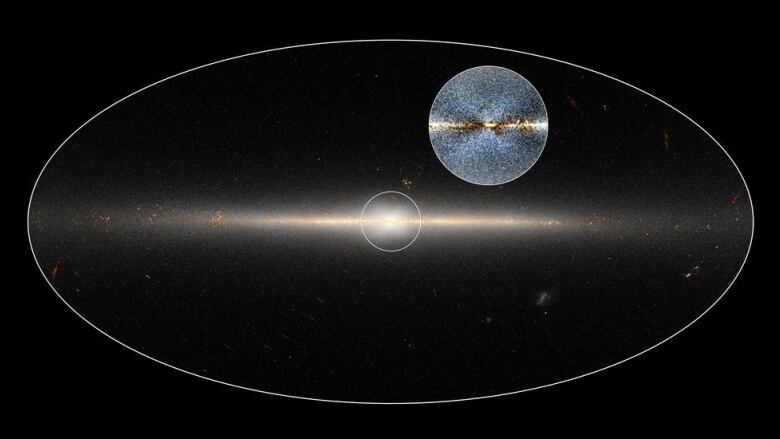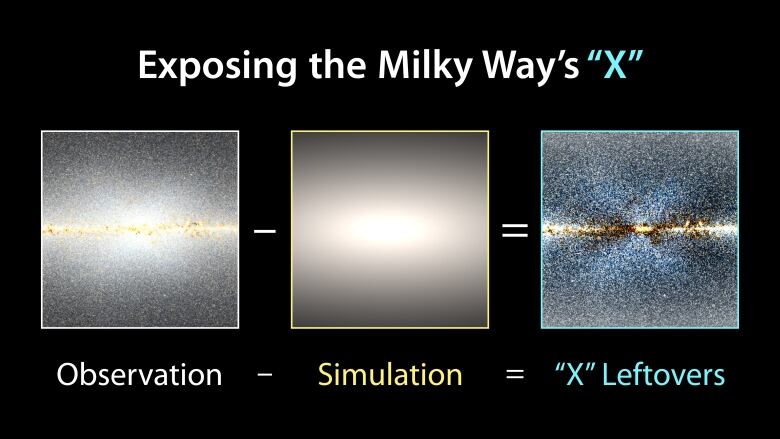Huge 'X' found at centre of Milky Way galaxy
Discovery took place after Toronto scientist tweeted out pictures from WISE telescope

An enormous X-shaped structure made of stars lies at the centre of the Milky Way, a new study of infrared light coming from our home galaxy suggests.
Many galaxies have an X-shaped structure at their core, but while previous studies have suggested the Milky Way contained such a structure, noone had directly observed it.
The research, reported in Astronomical Journal, is the first evidence an X-shaped structure exists in our home galaxy.
The discovery started out serendipitously as a call-out on social media.
In 2015, astronomer Dustin Lang of Dunlap Institute of the University of Toronto posted data from NASA's Wide-field Infrared Survey Explorer (WISE) mission on Twitter.
Melissa Ness, a postdoctoral researcher at the Max Planck Institute for Astronomy in Heidelberg, Germany, recognised the X-shaped structure and contacted Lang.
Together, they reanalyzed the data.
"The WISE image of the Milky Way bulge shows that the X-shaped nature of the Milky Way bulge is self-evident and irrefutable," theywrote in a paperpublished this weekin the Astronomical Journal.
"The X-shape morphology of the bulge in itself and the fraction of bulge stars that comprise orbits within this structure has important implications for the formation history of the Milky Way ... and spiral galaxies in general."
Compelling data but jury still out
Luke Davies of the International Centre for Radio Astronomy Research, said the data was "reasonably compelling."
"You can clearly see the structure is there, they haven't done anything particularly crazy with the data to get it," he said.
Buthe saidwhile there was an X in the data, the jury isstill out as to whether or not there is a true X-shaped structure at the centre of the Milky Way.

He said amore recent studyby Spanish astronomers using a different technique did not find evidence of an X-shaped structure.
"[The Spanish astronomers] don't say the X doesn't exist and it isn't there, they just say they tried to look for it in a different way and they haven't been able to find it."
Clues about galaxy formation
Davies, who studies galaxy evolution, said the presence of an X-shaped structure would tell us a lot about the formation of the Milky Way galaxy.
The Milky Way is a disk-shaped collection of dust, gas and billions of stars 100,000 light years in diameter.
It is a type of galaxy known as a barred-spiral galaxy thatcomprisestwo spiral arms, a bar-shaped feature that lies at the centre of the galaxy and a central bulge that resembles a box or peanut.
The central bulge forms in two ways: either by two galaxies crashing together or gas condensingin on itself to form stars.
"An X-structure only happens where you have an isolated bulge formation, not a bulge forming from lots of galaxies smashing together," Davies said.
"So what it kind of says is the Milky Way galaxy hasn't gone through a merger with another galaxy in its lifetime, otherwise it would have destroyed the X."












_(720p).jpg)


 OFFICIAL HD MUSIC VIDEO.jpg)
.jpg)



























































































